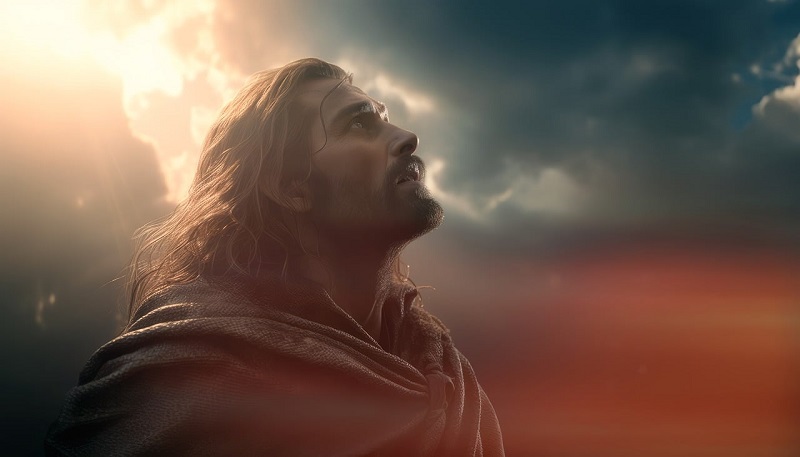What if I told you that some of the most powerful lessons about human struggle and divine intervention come from examples of natural disasters in the Bible?
These events illustrate not only the destructive forces of nature but also humanity’s enduring spirit and faith.
By examining these biblical disasters, we can better understand the challenges that persist today, making this topic incredibly relevant.
Join me as I explore these examples and their lasting impact on our world.
✅ The 4 Examples of Natural Disasters in the Bible

From floods to earthquakes, storms, and plagues, these occurrences serve not only as historical events but also as moral and spiritual lessons for believers.
By studying these biblical accounts, we can gain insight into God’s purposes and learn how to respond with faith, obedience, and resilience in the face of adversity.
1. The Great Flood and Noah’s Ark
The Great Flood stands as a pivotal episode among the examples of natural disasters in the Bible, encapsulating themes of divine justice and mercy.
Humanity’s defiance prompted a catastrophic cleansing, showcasing the stark contrast between God’s holiness and human fallibility.
In this narrative, Noah exemplifies unwavering faith amidst societal chaos, reminding us of the power of obedience in the face of overwhelming odds.
His laborious construction of the ark symbolizes not just physical salvation but spiritual preparedness, underscoring the importance of heeding divine guidance.
The variety of animals gathered in pairs speaks to the concept of preservation amidst destruction, emphasizing that God values all of creation.
The flood did not just serve to wipe the slate clean; it also initiated a new covenant, highlighting the potential for renewal and hope.
This transformative event encourages us to reflect on our own lives and the potential floods we may face, both literally and metaphorically, urging us to remain steadfast and responsive to higher callings.
In a world rife with calamity, the story of Noah’s Ark continues to inspire resilience, reminding us that even in darkness, there exists the promise of a rainbow.
2. The Plagues of Egypt
The ten plagues of Egypt serve as a gripping narrative that intertwines the raw force of nature with profound spiritual truths.
Each plague, from the transforming of water into blood to the swarms of locusts, exemplifies examples of natural disasters in the Bible, showcasing how divine intervention can manipulate the natural world.
Beyond the visible destruction, these plagues illustrate the tension between human obstinacy and divine will, as Pharaoh’s hardened heart led to his own nation’s suffering.
The escalating severity of the plagues acts as a poignant reminder that refusing to yield to higher authority often leads to dire consequences.
These ancient calamities encourage modern readers to reflect on the importance of humility and obedience.
In a contemporary context, as we grapple with environmental crises and natural disasters, the plagues remind us that compassion for one another and respect for the planet are not merely options, but necessities.
The narrative urges us to consider the ramifications of our choices, posing significant questions about our responsibility to heed moral and ecological imperatives.
When we align ourselves with greater values and compassionate actions, we foster a world where tragedies derived from human stubbornness can be mitigated.
3. The Destruction of Sodom and Gomorrah
The destruction of Sodom and Gomorrah, one of the most striking stories of natural disasters in the Bible, is not merely about catastrophic flames but is intricately woven into the fabric of moral consequence.
These cities, known for their blatant disregard for righteousness, stand as a sobering reminder of the pivotal role personal and collective integrity plays in the divine narrative.
The very nature of their demise challenges contemporary readers to reflect on their own lives and communities, urging them to evaluate societal norms and personal values in light of divine standards.
The escape of Lot and his family underscores a profound theme of mercy amidst judgment.
This duality invites us to consider the balance between justice and grace; while the cities faced devastation, there remained a glimmer of hope for the righteous.
The narrative compels believers to recognize that even in environments steeped in depravity, individuals can find refuge through faith and moral courage.
Thus, the saga of Sodom and Gomorrah beckons us to not only seek personal repentance but also to boldly advocate for righteousness within our spheres of influence, lest we overlook the warning signs inherent in our own culture.
4. Earthquakes and Storms in the New Testament
The New Testament weaves natural disasters into its narrative not merely as historical events, but as profound spiritual symbols.
During Jesus’ crucifixion, the earth trembled violently, and the temple curtain tore in two, a vivid reminder of the once-unreachable holiness of God (Matthew 27:51-54).
This seismic event signifies the shift in humanity’s relationship with the divine, opening the pathway for reconciliation and underscoring God’s ultimate authority over all creation.
The earth’s response is a powerful metaphor for the shifts within the human heart that come from understanding the significance of Christ’s sacrifice.
In another remarkable instance, Jesus calming the storm on the Sea of Galilee offers a lesson in faith that resonates deeply within the believer’s experience (Mark 4:35-41).
The disciples’ panic amidst the tumult mirrors our own anxious moments when faced with life’s unpredictabilities.
By demonstrating His mastery over the raging winds and waves, Jesus reassures us that faith can prevail even in chaos.
These examples of natural disasters in the Bible serve as reminders of God’s sovereignty and a call to trust in His presence, especially when life feels tempestuous.
Through the lens of these moments, we glean that faith in God provides not just peace but a certainty that transcends our immediate circumstances.
Examples of Natural Disasters in the Bible (Summary)
The Bible presents numerous examples of natural disasters that carry profound spiritual and moral lessons.
From the Great Flood and Noah’s obedience to the ten plagues of Egypt, the fiery destruction of Sodom and Gomorrah, and the earthquakes and storms in the New Testament, these events illustrate God’s power, justice, and mercy.
They reveal the consequences of sin, the importance of obedience, and the necessity of faith during times of uncertainty.
Modern readers can learn that while natural disasters are often beyond human control, they offer opportunities for reflection, spiritual growth, and understanding God’s moral and divine order.
By studying these biblical accounts, we are encouraged to cultivate resilience, trust in God, and live lives marked by righteousness, preparedness, and moral responsibility.
These lessons remain relevant, guiding navigation of challenges, maintaining faith, and responding ethically to adversity.
FAQs about Natural Disasters in the Bible
1. What are some examples of natural disasters in the Bible?
Examples include the Great Flood, the ten plagues of Egypt, the destruction of Sodom and Gomorrah, earthquakes, and storms recorded in both the Old and New Testaments.
2. Why did God allow natural disasters in the Bible?
Natural disasters were often allowed as acts of divine judgment, warnings, or lessons to teach obedience, faith, and moral responsibility.
3. What lessons do biblical natural disasters teach?
They teach the importance of faith, obedience, repentance, resilience, and understanding God’s sovereignty over nature and human life.
4. How does the story of Noah’s Ark relate to natural disasters?
The Great Flood was a divine judgment on human wickedness, and Noah’s obedience to God ensured the survival of his family and all living creatures.
5. Are there New Testament examples of natural disasters?
Yes, examples include earthquakes during Jesus’ crucifixion (Matthew 27:51-54) and the storm on the Sea of Galilee that Jesus calmed (Mark 4:35-41), highlighting God’s power and teaching faith.
Other Blog Posts
- 6 Examples of Narratives in the Bible
- 6 Examples of Marriages in the Bible
- 4 Examples of Pride in the Bible

Grounded in faith and driven by purpose, I’m a Christian blogger and online research specialist with a passion for God’s Word, lifelong learning, and healthy living.
